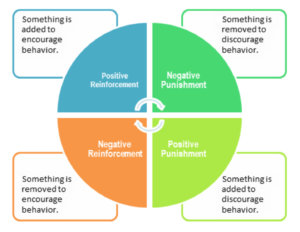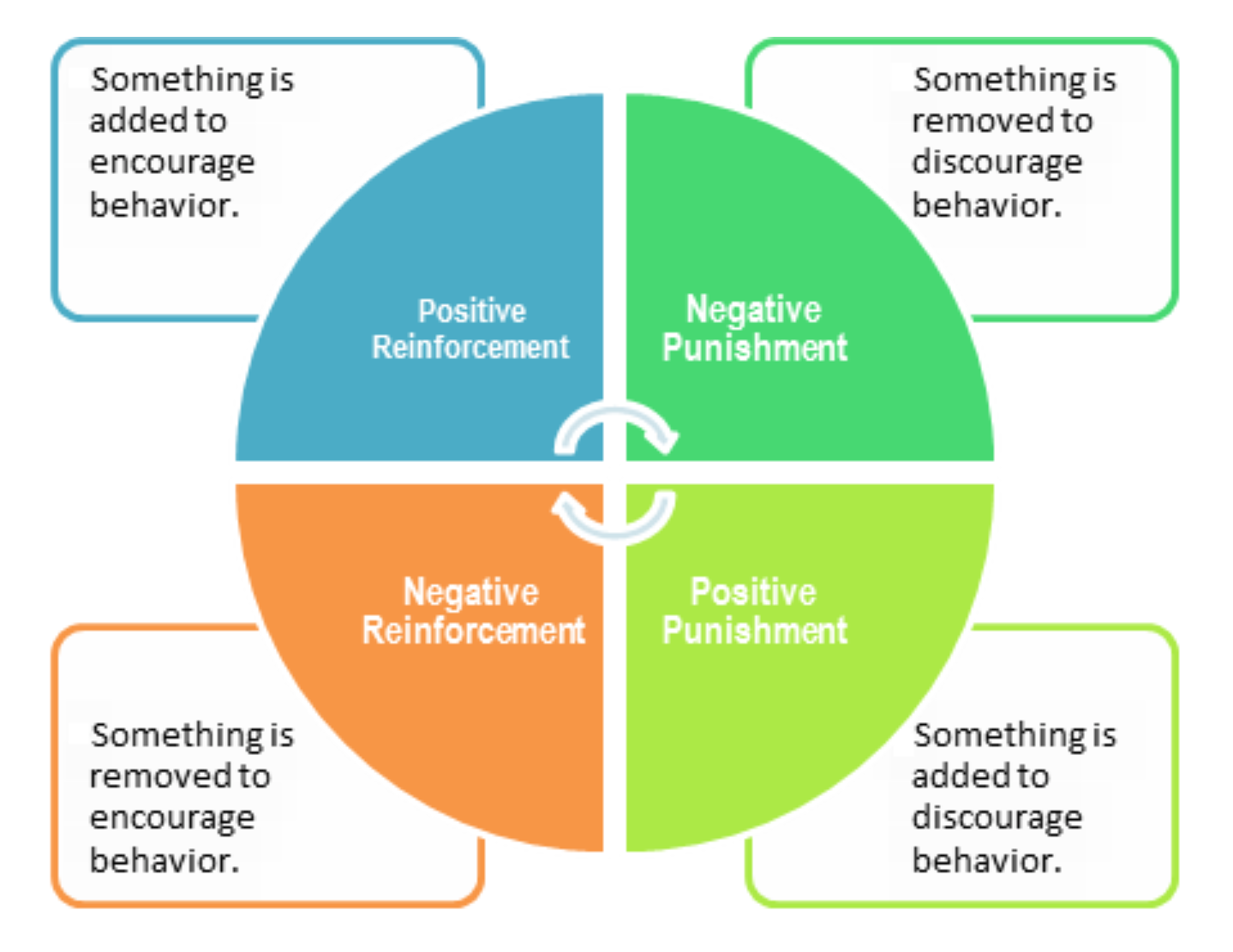Positive Reinforcement Training

I had a colleague ask me to create a post about positive reinforcement. She was curious about my response to prospective clients who specified or questioned whether I used positive reinforcement in my training. My colleague added that occasionally, she would get an inquiry that demanded only positive reinforcement training be used on their dog.
When she asks these folks what they mean, most people respond with the usual tropes about not wanting their dogs abused or injured. This is fair. I am concerned about the recent proliferation of ‘trainers’ being caught on camera physically abusing dogs. As trainers, we have a fundamental duty to prioritize the welfare of the dogs we work with. It’s crucial not to confuse some individuals’ misuse of training methods or tools with the appropriate applications of those things.
These are the landmines we face as a trade because our language has been hijacked. We argue over the semantics, even when the definitions are quite clear. Not that we wouldn’t use positive reinforcement, but as I stated in a previous post, it’s the intimation that we are using methods and/or tools that harm more than help.
The world wide web is a magical place. It enables folks to discover things they don’t know, but it requires some divination to transcend the first page of a Google search. There is always more information that reveals flaws in logic. It is human nature to be curious, but the internet has made us less so. And we cling to our confirmation bias.
In the information age, it can be challenging to sift through all the misinformation, as sensationalism often overshadows the details of any topic. Just look at how divisive politics and religion have become, and how difficult it is to hear news that isn’t tainted with opinions instead of facts.
Stop Reading The Internet. Find A Competent Dog Trainer.
I would guess that most new dog owners search the internet for training information. I get that the Internet was designed to facilitate decision-making, but I have to say it has crushed critical thinking and much of the intellectual curiosity that accompanies it.
Convenience is marketable. Social reviews are subjective as well. Some people have learned to weaponize the internet to engineer drama for superficial reasons, but even I would be suspicious of a company with no negative reviews. Although we can’t please everybody, the internet has made it easy to openly and willfully deceive people.
The tendency to trust the first page of search results shows a readiness to believe almost anything. Google offers convenience, leading people to assume that the internet frees them from the responsibility of researching topics beyond their confirmation bias.
Treat Training and Clicker Training
People equate positive reinforcement to treat training or clicker training. ‘Catching’ a behavior with a conditioned marker and then rewarding the dog ensures the likelihood the behavior will occur again, at higher rates of frequency.
The dog must be conditioned to a marker first. It can be a specific sound like a clicker, or a word like “Yes!” or “OK!”. Once the dog has engaged in the behavior, the marker indicates it has earned a reward. It’s a great strategy, until the dog is no longer hungry, or competing interests are too powerful for the dog to ignore.
Positive reinforcement training is a part of a complete training program and is often misconstrued to suggest anything else is harmful or painful. It’s not. When people think of ‘positive’, ‘negative’, ‘reinforce’, and ‘punish’, the words are framed in ways that drive an emotionally charged and deliberately polarizing agenda.
Because fear sells.
The internet… always wants to sell you something… so when someone reads sensationalized, drama-laden nonsense like “We don’t shock, choke, or use aversive methods on dogs…” it tells me everything I need to know about whoever wrote that. They’re not selling dog training. They are reinforcing fear.
B.F. Skinner’s Four Quadrants
Good trainers will tell you that regardless of what the social media darlings are saying, the minute you put a dog on a leash, harness, head halter, or collar of any form, you have created an aversive. Dogs can’t learn in a vacuum, and permitting unearned freedom is a powerful reinforcer. Leashes are necessary for learning.
People don’t know that. Whether they have been deliberately misled or are just cognitively unaware, there are thousands of relatable examples in our own lives to support this. Our paychecks are tied to our presence at work. Go to work, get the pay. Don’t show up for work, don’t get paid.
Going to the doctor, especially if you are a man or woman of a certain age, is a form of negative reinforcement. I don’t wake up on the day of my mammogram or oral surgery like I’m going to Disney World. The mental and physical discomfort alone gives me existential dread, but there I go, sucking it up and doing it. When I get a clean bill of health, it confirms that the care I take of myself has paid off.
And for folks that want to argue over dogs not ‘needing’ all four quadrants, our very existence contradicts that. Reinforcement and Punishment are quarter-turns on the cosmic wheel of reality, and to deny this is to deny much of the natural world. It doesn’t require debilitating fear or pain. It’s by degree. There will always be ‘too much’ or ‘not enough’, but the real skill lies in knowing what constitutes ‘just right’.
Do I use Positive Reinforcement?
When someone asks me if I use positive reinforcement, I answer unabashedly, unequivocally, and resoundingly yes, followed by the same enthusiasm for the other three quadrants. My understanding of them in the scientific sense is thorough and intensely practiced. If my honesty becomes a roadblock to a relationship, I’ll own it. People call me because they are faced with a task they cannot manage successfully with their current skill set or tools. If they didn’t need help, they wouldn’t be calling.
As a professional, it is my job to denude people of their fantasies, not endorse them. I tell people the truth. I use all four quadrants. Not just positive reinforcement, but negative punishment, negative reinforcement, and positive punishment. I get people tripping over themselves as they chase the true meanings for each of these things before I compound it all by saying silly things like “I don’t make these things happen, I let them!”
When someone asks if I use positive reinforcement, I can confidently say I do. However, if they insist I use only positive reinforcement, I explain that’s not possible and then tell them why. It’s all about adaptation and strategy, speed, timing, and understanding, and if a prospective client were calling me for help, it’s a fairly safe assumption that they possess none of those things.
If your current training conventions are not yielding results, schedule a behavior consult at your convenience. Our online coaching is a popular option for folks outside our coverage area, especially if you’ve been struggling with training for a while.
We are only an email away, and if you are in our coverage area, we would be delighted to help you in person, so you can feel free to contact us directly.


